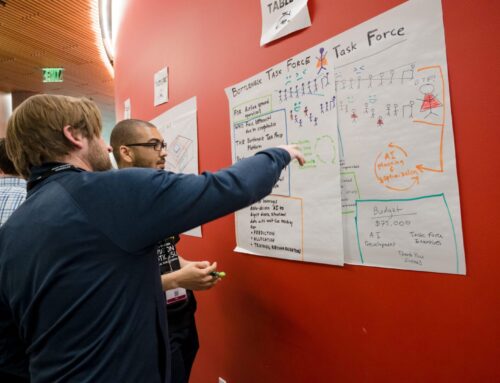New Highway Expected to Help Travelers, Boost Growth
Just-opened Southern Beltway provides faster route to airport, growing economic corridor
By Rick Wills
Published November 1, 2021
Read Time: 3 mins
A 13-mile section of highway that connects Pittsburgh International Airport with the region’s far southern suburbs opened in October, the first such project in Pittsburgh in decades.
The Southern Beltway, which opened on Oct. 15, will save travel time by providing an alternative to congested roads. It also forms part of a growing business, trucking and cargo corridor that airport and economic development officials say will attract business and more jobs to the region.
“This road is part of an ecosystem of economic growth that has developed around the airport. You will see development on property along the new road,” said Vince Gastgeb, who heads corporate and government relations for the Allegheny County Airport Authority, which operates PIT.
The toll road runs from the airport to Interstate 79, just north of the Southpointe office park, one of the fastest-growing areas in the Pittsburgh region. For residents of that area and for truckers, the road is an obvious time-saver.
“Accessibility and the ease of getting to the airport will be big factors in this road’s popularity,” said Gastgeb, citing the near-constant congestion of the Parkway West, which connects downtown Pittsburgh and the airport.
According to the Pennsylvania Department of Transportation, the $800 million road will ease congestion on arteries like the Parkway West, I-79 and State Route 50.
It also provides emergency-response vehicles, businesses, and the public with a safer alternative to rural, two-lane roads, the department said.
Another Boost to Development
“Without a doubt, the Southern Beltway will serve as an economic catalyst for the Greater Pittsburgh region,” said Pennsylvania Turnpike CEO Mark Compton. “It will provide better access to sites being developed along the Energy Commerce & Innovation Corridor, 52 miles of largely untapped private, commercial and industrial lands near Pittsburgh International Airport. This, in turn, will support new employment in this area.”
Development of the airport area started before completion of the Southern Beltway, said Chris Heck, president and CEO of the Pittsburgh Airport Area Chamber of Commerce.
Amazon already has two fulfillment centers near the airport, and various new industrial parks also dot the area.
“As development continues at a rapid pace along the beltway employment, cargo and travel will all follow suit,” said Heck.

The new 13-mile stretch of highway will link Interstate 79 and State Route 50 to Pittsburgh International Airport, providing an alternative to congested roads. (Image courtesy of the Pennsylvania Turnpike Commission)
PIT’s cargo business and transformation into an international logistics center is already occurring. The increase in consumer demand for online purchases and congestion at major international gateway airports is helping to bolster cargo operations at PIT.
More international cargo flights are touching down and carrying goods, from medical and tech supplies to garments and more. Cargo operators and freight handlers have praised the airport for its ability to unload planes efficiently and quickly send trucks on their way to distribution centers and their final destinations.
The growing operation is helping to boost the local economy through job growth and new business opportunities. Officials said the new highway adds to that.
New Highway, Modern Terminal
The Southern Beltway is the first new highway built in Western Pennsylvania in 25 years. The next major project in this region will be the 8-mile, $1 billion section of the Mon-Fayette Expressway from Jefferson Hills to Duquesne.
The new road’s opening coincides with Pittsburgh International Airport’s groundbreaking for its new $1.39 billion terminal, the first in the country to be built from the ground-up post-pandemic.
That project will create thousands of jobs and generate billions for the regional economy. Once complete, it will lower operating costs and make the airport more efficient and user-friendly.
According to an economic impact report created by EBP US Inc., the new terminal, expected to open in 2025, will generate $2.5 billion for the local economy and add some 5,500 local construction and skilled labor jobs, along with 8,500 other jobs.






